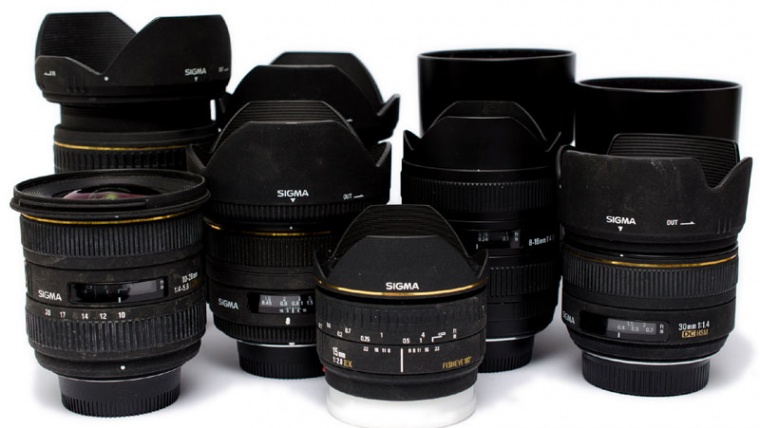
As you all may know, Sigma is a Japanese manufacturer of cameras, lenses, and flashes; however, despite producing their own cameras, this company is mostly known for its lenses, which happen to be compatible with important brands such as Nikon, Canon, Pentax, Sony, Olympus and Panasonic.
Even though the actual lens list is really long, we are going to review in depth three of their best lenses which any keen photographer should consider getting.
Table of Contents
Yes, it’s time to review a budget zoom lens. We all know that these aren’t as exciting as your expensive L lenses from Canon or premium zoom lenses with f2.8 apertures, but still, there are a lot of people out there who are in a market for this kind of lens and they also deserve an in-depth and informative review about their next potential purchase. This time, the star of this article is the Sigma 70-300mm f4-5.6 APO DG Macro. While the maximum aperture and the zoom range are pretty obvious, we should share a few words about other specifications. The internal design of this lens consists of 14 elements in 10 groups, the aperture has 9 diaphragm blades, the filter thread size 58mm and it can focus as close as 0.95m with a magnification of 0.5x. It’s available in many different mounts: Canon EF, Nikon F, Pentax KAF, Sigma SA Bayonet and Sony/Minolta Alpha. It can also be fitted on both APS-C and full frame cameras, which is a very rare feature to find on a lens in this price range.
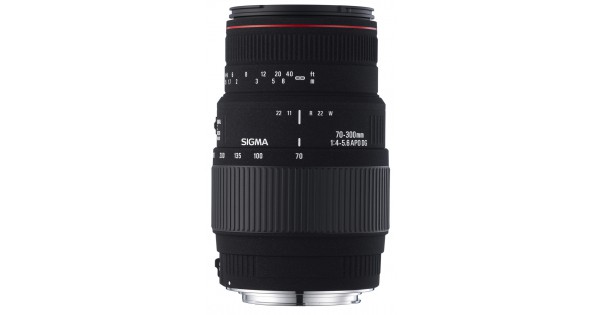
The build quality is what you would expect for a budget lens, everything except the lens mount is made out of plastic. Both the zoom ring and the focus ring are covered with rubber, so that’s a plus. Luckily it doesn’t feel as cheap as it looks so we can’t complain too much here. The design of the lens could be a little better, but hey, it has a red ring on the front element, at least there’s that. Lastly, there are two switches on the lens; one that turns autofocus on and off and one called a “Macro” switch that is just used to prevent you zooming out beyond 200mm which would disengage the macro mode. As an added value, the lens also comes with the detachable lens hood, which is certainly great to see. In the end, Sigma did as good job as they could when it comes to build quality for a budget lens like this. One feature it’s lacking that may bother some people is the image stabilization. It wouldn’t be such an issue on a lens with a maximum focal length of 200mm or one with a faster aperture than the f5.6, but having no stabilization on 300mm limits your options while shooting. On a sunny day or even during the overcast skies you shouldn’t have any major problems with it, but lower light conditions will require a tripod for achieving the best results or a very good DSLR that can handle high ISO values necessary to get the right shutter speeds for handheld shooting.
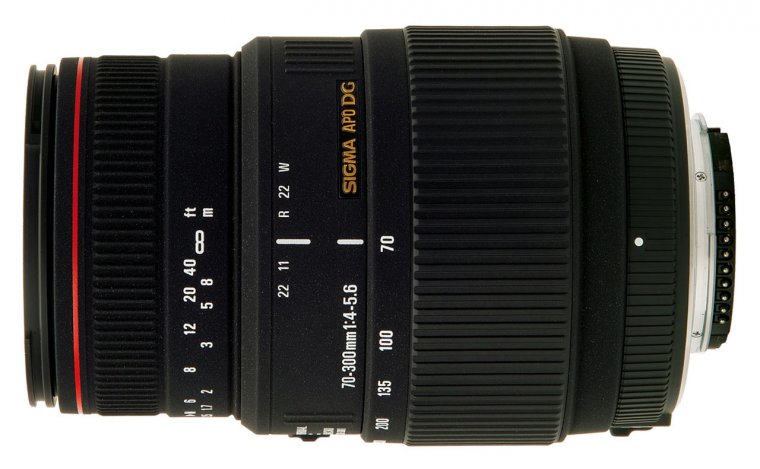
The autofocus on the 70-300mm fits the average nature of this lens very well. The motor inside the lens is of an older design making it louder and slower than lots of today’s new lenses but at least it’s precise most of the time which can’t always be said even for some more expensive lenses. It’s a little slower on the long end of the zoom range but still nothing surprising for the money you’re paying for this lens. Manual focusing is pretty easy to do because of the well-designed focus ring that has just the right amount of travel to it for smooth and precise focus operation.

Photo courtesy of Dari Extension
Now let’s talk about the topic that most of you are interested in the image quality. While the performance is far from perfect, we are happy to say that there aren’t any major issues either. Like with the most Tele-zoom lenses you’ll get the sharpest results at the widest end of the zoom range with ones at the longest end being the softest. You can end up with some good results without stopping down the aperture until about 200mm, but beyond that, you’ll need to stop down the lens to at least f8 to get satisfying results. Macro results are about the same, which isn’t that much of a problem because you’ll need a smaller aperture than f5.6 anyway to get more things in focus because of the thin depth of field The macro mode itself is quite useful, giving you a magnification ratio of 1:2 which is very close to a true 1:1 macro lens.

Photo courtesy of Albertronik
While the center sharpness is respectable, corners can be quite soft on when used on the full frame camera, so keep that in mind. Chromatic aberrations are also handled quite well due to the special glass apochromatic elements inside the lens which means that they are more resistant to aberrations than much more common lens elements. Other things like vignetting, contrast, distortions and color accuracy are also pretty ok with nothing that stands out as being a problem. Because this is a full frame lens, vignetting and distortions could end up being more noticeable than on the APS-C sensor but they are still at least average and never worse than that. The out of focus elements in the pictures (or bokeh) are also quite smooth with no real flaws that would make the bokeh distracting to look at. All in all, there’s not much to be disappointed about when it comes to image quality, but nothing much to get excited about either.
The 70-300mm f4-f5.6 APO DG Macro is a solid lens. Almost every one of its aspects corresponds well to its price; you can say it’s well balanced. On the hardware side of the things, the build quality is decent, it’s easy to control, the 1:2 macro mode is a useful addition and it’s compatible with both APS-C and full frame DSLRs. We can only criticize Sigma a little for the omission of image stabilization, but maybe it’s unrealistic to expect it on a lens that costs this much. The autofocus is also nothing to write home about, but at least it’s reliable. Finally, the image quality could certainly be better, at least when it comes to sharpness, but that’s also a category whose performance is always determined by the price of the lens. You get what you paid for with this one, that’s the moral of the story.
Are you looking for a way to take your photography to the next level but you aren’t ready to make a switch to full frame just yet? Did you get a shiny new DSLR with a not so shiny kit lens and figured out that you wanted more from your camera? Well, I think we may have an answer for you right here. So, just sit back, grab a snack and let us tell you about one of the most impressive lenses on the market that you can get for your DSLR today.
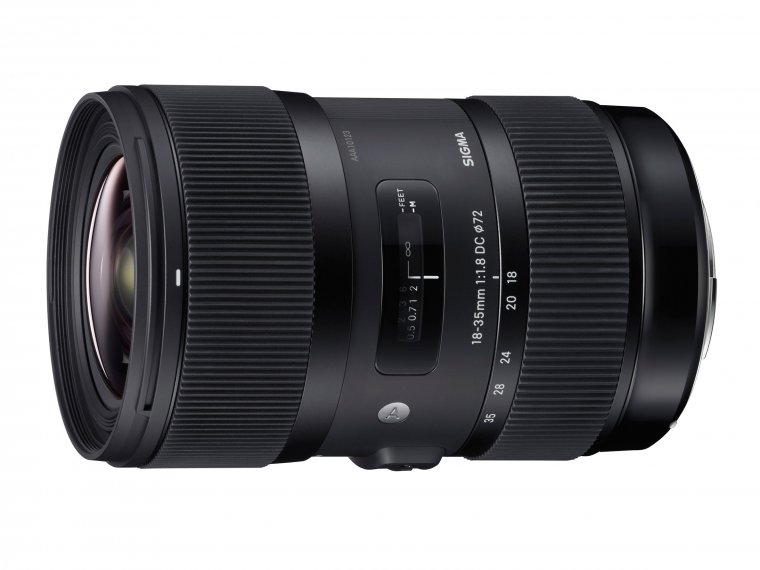
I don’t think that there are many photographers who haven’t about the Sigma brand. They are around for a long time now and they’ve always been chasing the tail of the big boys and stood out as a more affordable alternative to the more expensive first party lenses. Some of their lenses turned out good and some are better left forgotten, but despite that reputation, they are still an influential company that has the manpower to stand for themselves in today’s camera market. And that’s where the 18-35mm DC HSM fits in, it’s a strong effort from the company to change its image and make a new name for themselves. It’s very clear that company switched its efforts from competing on the budget market to a more expensive one and thus targeting the more advanced and professional photographers. Now, the question we all have to ask ourselves; is the 18-35 a success or a failed attempt? Let’s take a closer look.
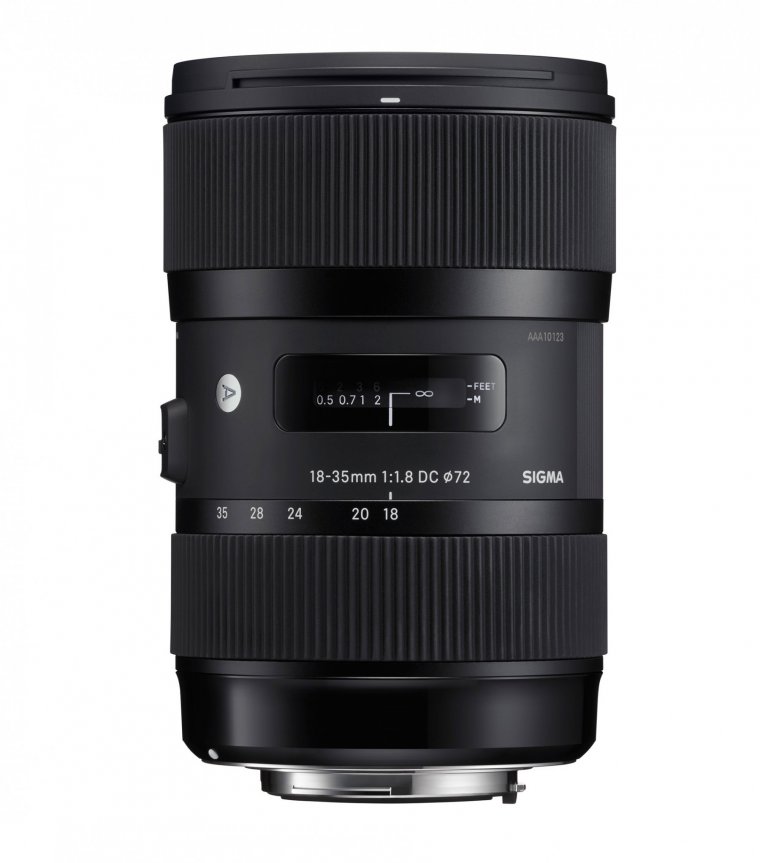
One of the most notable features that make the 18-35mm such an exciting lens for the APS-C camera owners is its constant f1.8 aperture. Yes, you’ve read it right, someone finally made a zoom lens with such an impressive maximum aperture and it’s your neighborhood friend Sigma. This lens is an almost perfect replacement for your regular 18-55mm kit lens at the only expense of offering a little less zoom range. But let’s be honest, if you’ve decided to buy a premium lens like this and you really need that 50mm focal length you’ve probably already invested in a nice prime lens anyway. So what’s the benefit to having such a large aperture? The two obvious ones are improved low light performance and more creativity with getting a more out of focus background in your shots. That means that you get two options in low light with this lens: shooting at f1.8 to get faster shutter speeds at higher ISOs to capture motion more easily or getting better picture quality in general by being able to drop down the ISO lower than with the traditional lenses with smaller maximum apertures. Now let’s talk bokeh! While it’s not that as easy to achieve dramatic blurred backgrounds with a wide angle lens like it is with 50mm or 85mm lens it’s still very possible at f1.8. If you know what you’re doing you can get some very unique shots with this lens, meaning you can get a lot of your image in the frame but still being able to emphasize your subject by blurring out everything behind it.
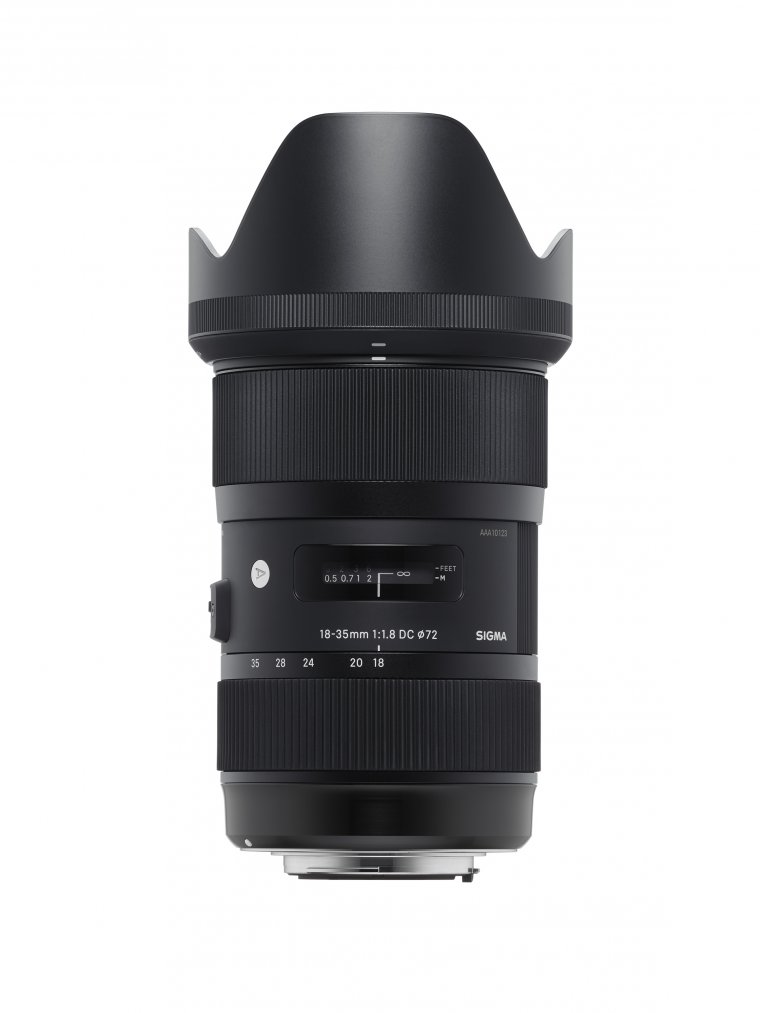
Now, just the maximum aperture alone makes this lens an impressive achievement for Sigma, but it would be hard to justify its price and existence if the image quality wasn’t up to the standard, so let’s share a few words about that. Simply put, the 18-35mm is a beast in that regard. You’ll always get sharp results with this lens no matter the focal length you are on. There’s no point in stopping down this lens to get sharper pictures from 18-24mm and you’ll also get a very slight improvement at best if you stop down to f2.8 or f4 from 25-35mm. Besides handling sharpness well, it also holds its own in other aspects like distortion and vignetting and keeps them under the control. There are some chromatic aberrations present in some forms but that’s pretty much expected from a lens that’s built to work on the APS-C sensor, let alone a zoom lens, so it can be considered as an average performance. The 18-35mm can focus as close as 26,5mm so it has some macro potential. The image quality while doing close-ups is a little soft wide open but sharpens up nicely when stopped down.

Photo courtesy of Antoine Bourdet
Now’s the time to take a look at the build quality of the lens and also at the performance of its autofocus system. The build quality is on the very high level with the lens itself being made from a combination of metal and Sigma’s in-house material called Thermally Stable Composite. Both the focus and zoom ring are covered with rubber and have a nice grip while the lens mount is made of brass. All that combined with a very hefty weight of 810 grams makes this lens feel very substantial in your hand and we have no complaints here. Now, we wish we could give the same praise to the autofocus. While it is fast and quiet and works very well in Live view it doesn’t perform so well while using the phase detection AF. It’s fine when used at apertures smaller than f2.8 but it can be quite hit and miss with larger apertures. Your safest bet is to use your camera’s central autofocus point whenever you can. You can improve things with Sigma’s optional USB dock and the AF adjustment software that comes with it but it will take a lot of your time and patience to learn to work with it, so don’t say that we didn’t warn you. You can also achieve similar results if your camera has the ability to micro adjust AF.

Photo courtesy of Thomasz Warchocki
So what is our final judgment on the 18-35mm DC HSM? Is it really a gem everyone wants it to be? Is it really possible that Sigma finally stepped up their game and made a lens that can stand up to the already well-established competition? Well, folks, they finally did it. This lens oozes quality from its every pore; from the moment you take it in your hand and put it on your camera to the moment when you’re sitting at your computer and reminded yourself why this isn’t another cheap lens. It’s that good. But it wouldn’t be Sigma if they haven’t missed their mark on at least one thing and that thing is autofocus. It’s just ok and we hope that they will improve it on the next iteration of this lens and really make it a lens that could be rated 10/10. All in all, this lens is still a great purchase for any APS-C camera owner looking for a versatile wide angle zoom lens.
Yes, I’m sure that everyone’s seen this coming, it’s time for the review of Sigma’s famous 50mm f1.4 DG HSM Art lens. A lot of people wouldn’t bet on Sigma being able to release a premium lens that could compete with expensive first-party lenses, but here we are, this is their serious attempt in making that happen. It’s true that the market is flooded with many models of 50mm lenses, it is such a popular focal length, but there is always some room for making something that can stand out from the crowd. Did Sigma really succeed in making such a lens? Let’s find out.
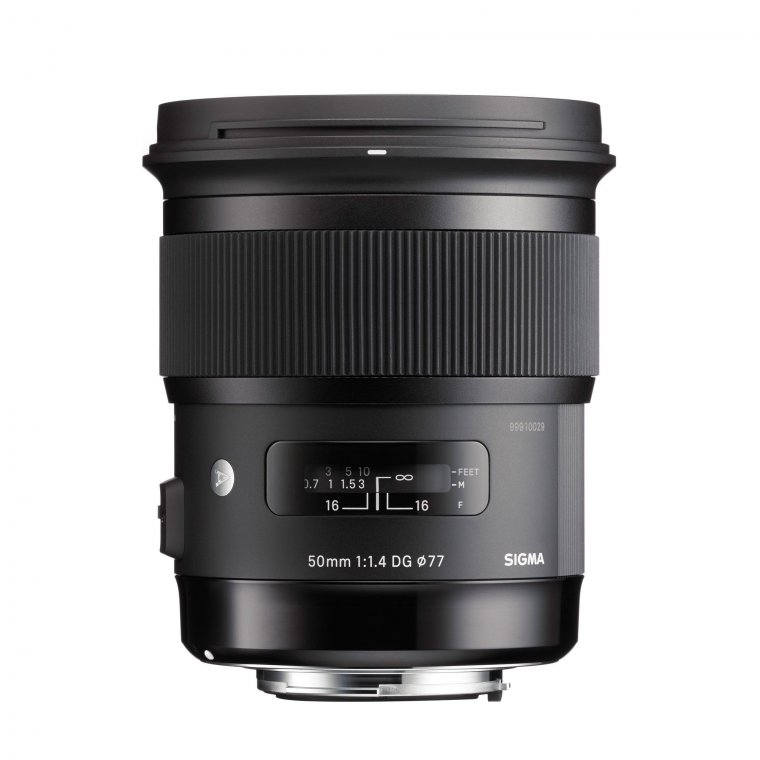
First, let’s talk some important features and the build quality in general. The lens is mostly made out of plastic but it’s the high-quality type. At least the lens mount is made out of metal. Despite being made out of plastic, it doesn’t feel cheap at all, everything on the lens fits perfectly and is sealed tight. It also has the weight to prove it, at 815 grams shooting with it could certainly become a workout after a while. Unfortunately, there’s no weather sealing, which would be a nice feature to see on the lens of this price. The focusing ring is of adequate size, it rotates 90 degrees and is very grippy, so manual focusing shouldn’t be a problem for anyone. There’s also a basic distance scale on the barrel of the lens with the depth of field indicators for the aperture of f16. There are 13 glass elements inside the lens layered in 8 groups and there’s also one aspherical element. The minimum focus distance is 0.4m, which isn’t particularly impressive for a 50mm lens. One great thing is that Sigma 50mm DG HSM is compatible with both full frame and APS-C cameras and available for all major mounts like Canon EF, Nikon F, Sony Alpha and Sigma SA. Using it with a full frame camera gives you a field of view of 47 degrees and 31 degrees if used on an APS-C sensor. The autofocus is a ring-type Ultrasonic motor that focuses internally making it easy to use filters with this lens.
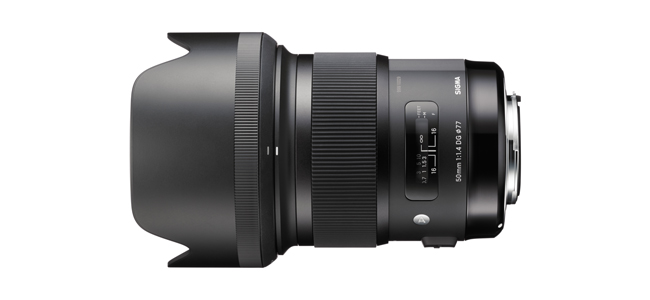
Now’s the time for the most interesting part of the review, the image quality. When it comes to sharpness, most of the times you’ll hear that the lens is good or ok wide open and that it reaches it’s peak sharpness somewhere around the aperture of f8. Interestingly enough, this time it’s not the case. The Sigma 50mm DG HSM is very sharp right from the start at f1.4 and you’ll only gain very little extra sharpness stopping it down to f2 or f2.8. That’s mighty impressive performance for a 50mm with such a large aperture. The results are the same wether you are using an APS-C sensor or a full frame one. The same impressive performance continues with chromatic aberrations, distortion and vignetting. Chromatic aberrations are well controlled on both types of sensors, being only slightly more noticeable on full frame which is still nothing out of ordinary for this type of lens. This being a full frame lens, vignetting and distortion are practically non-existent on APS-C. They do exist on full frame, but still well under control for a lens at this price point, no worries there. Macro performance, if you could call it that at the focus distance of 0.4m, is a little soft wide open all though by f2.8 it is decently sharp and being very sharp at f8. All this performance (except macro) makes this lens one of the best 50mm lenses your money can buy if your line of work requires very high image quality. It could easily be compared with the best out there like Zeiss Otus or the Canon 50mm f1.2 L. It’s also impressive and very rarely seen that a lens performs so consistent regardless if you’re using it with a full frame or the smaller APS-C sensor.
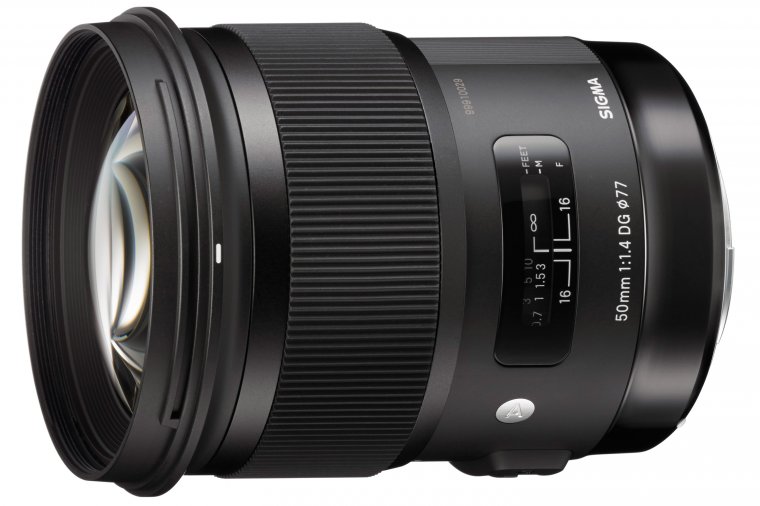
We should shed some light on the autofocus system found in the 50mm f1.4. The Hypersonic motor that Sigma implemented is very quiet in its operation which is always a positive thing. It’s also very precise and fast when used with the phase detection AF, at least when it comes to the central AF point. Depending on what body you’re using it with you could experience less reliable focusing with outer focus points which could easily be attributed to the fact that we’re talking about a lens with a very large aperture that will challenge most autofocus systems when shot wide open.
The problem isn’t so severe with live view autofocus with contrast detection AF always being more reliable than phase detection; that’s just the nature of the beast. One thing that could be a problem for people shooting video and requiring a fast autofocus in live view for tracking purposes is that the AF system is considerably slower on this occasion than with the eye level shooting. It seems that Sigma had the photographers in mind when designing the AF system more than the video makers. If you’re feeling adventurous enough to play with your autofocus even more than with the settings that are on your camera, you’ll be pleased to know that this lens is fully compatible with Sigma’s USB dock accessory. Provided you could cope with not so friendly user interface that comes with it, you’ll gain the ability to fine-tune the autofocus to your deepest desires. It’s also helpful if you were unfortunate enough to end up with a copy of the lens that has back/front focusing problems and your camera didn’t come with the option to micro adjust the autofocus.

Photo courtesy of Mishin Dmitry
So what is the final verdict on the Sigma 50mm f1.4 DG HSM lens? Bottom line, it’s great! There really isn’t much here to complain about and the 99% of the people that end up buying this lens should really be really happy with its overall performance and feature set. It may not be ideal for video makers that require fast autofocus in live view, but it’s still a pleasure to focus this lens manually. Lastly, the image quality, oh boy, you could write rhapsodies about how good it is. If the image quality of the lens is your highest priority this one should be on the top of your list. Coming back to the beginning of the article and the burning question of wether Sigma succeded in their attempt to shake the market with a truly premium lens we can say with utter confidence that they really did. It seems that Sigma is on a roll these last few years and we see no signs of them stopping anytime soon. Could the next 50mm lens be an f1.2 one? Let’s just wait and see what the future holds and in the meantime cherish this little beasty that’s already in our hands. Good job Sigma, good job!
I’m looking for a lens that has a very wide zoom range, decent image quality and a very compelling price point. I’m currently using a DSLR with an APS-C sensor and I’m planning to switch to full frame in near future, meaning that I also want the lens to be compatible with that camera. What are your suggestions?
You should definitely consider the Sigma 70-300mm f4-f5.6 APO DG Macro. It’s one of the company’s most affordable lenses, but certainly a very capable one in terms of its general value and feature set. It’s built decently well, has a very useful zoom range and can provide you with respectable image quality no matter if you are using it on an APS-C or full frame camera. It’s also a very flexible zoom lens thanks to its dedicated macro mode, which allows you to get quite close to your subjects and get some dramatic looking shots. If you don’t mind that it’s a little larger than your average telephoto lens and that it lacks image stabilization, you should be more than happy with the Sigma 70-300mm APO DG Macro and get some very nice-looking photos for not much money at all.
I’ve been using a camera with an APS-C sensor for the most of my time and I’ve decided that I want to invest in some higher quality glass. I want a lens that will replace my old kit lens and that has a similar focal range, but with a fast and constant maximum aperture. Naturally, I also want it to be sharper than the kit lens and with less optical problems such as chromatic aberration or distortion. Is there such a lens out there?
The Sigma 18-35mm f1.8 DC HSM wide angle zoom lens sounds like a perfect choice to fit all of your needs. It is a perfect fit for any DSLR with an APS-C sensor and a serious upgrade over something like a kit lens. It has a recognizable, stylish and durable design, high quality optics that are able to produce excellent image quality at all focal lengths and apertures and also a price point that is quite reasonable for such a well-made piece of glass. It doesn’t give you as much of a zoom range at the long end as a kit lens would, but it will provide you with much better-looking photos, even in low light condition due to its bright constant aperture of f1.8. You’ll also be able to get stills that stand out from the crowd due decently wide field of view and that same aperture that will give you some nicely blurred backgrounds, especially at 35mm. It’s a nicely designed and professionally made lens no matter how you look at it and is a great choice if you want to take your photography to the next level.
I’m mostly interested in portrait photography and looking for a premium 50mm prime lens. It needs to have an aperture of f1.4 or faster, excellent image quality and a sturdy body that can handle some abuse, since I’m also doing street photography as well. Price is no issue, since I’m looking for a lens that is an excellent performer on all fronts. What would be your first pick?
Look no further from the Sigma 50mm f1.4 DG HSM Art. While a 50mm f1.4 lens may not sound very exciting for today’s modern standards, in this case, there’s certainly a lot to be excited about. This lens was made with one thing in mind and that’s image quality. It was designed to rival the best offerings from other first and third-party manufacturers and establish Sigma as one of the leading companies when it comes to making quality lenses. If your highest priority is to get a lens that’s very sharp, even wide open, then the Sigma 50mm f1.4 HSM Art should be on the very top of your list. It doesn’t come cheap, but you should know that you’re getting a piece of gear that will allow you to get the most out of your camera, no matter if it’s a professional body or made for beginners. You don’t have to be a portrait photographer to appreciate this lens, almost any photographer out there looking to get some excellent looking stills will be able to make use of it and be satisfied with their purchase.
Is there any benefit to buying a third-party lens over a first-party one? Are they of any lesser quality than the ones coming directly from the first-party manufacturers? Do you advise the purchase of a first-party lens over a third-party lens? Please advise.
Well, the main differentiator between a first and a third-party lens has to be price difference, which is a factor that remains unchanged even in today’s times. That’s not to say that there are no expensive third-party lenses, but for the most part they do cost less money than their first-party counterparts. Not a long time ago, the general rule was that getting a third-party lens meant getting a product that isn’t built as well or doesn’t provide the best optical quality and speed as many professionals would like to get from a lens, but luckily times have changed. Third-party manufacturers have really stepped up their game in the recent years and now, it’s not even a slightest problem to get a well-made and well-performing lens from such companies as Sigma, Tamron, Tokina, Samyang and so on, even if you’ve got your eyes set on more budget friendly offerings. Just make sure you’re always well informed and you do your research before making a final decision. In a nutshell, it’s hard to go wrong with buying a third-party lens in these modern times, as long as you’re getting it from a reputable and trustworthy manufacturer and Sigma is certainly one of those companies. So, to answer the last question, we can wholeheartedly advise you to choose a third-party lens over a first-party one, as long as you’ve done your homework and you know that you’re choosing the right type of lens that suits your needs.
Comments (0)
There are no comments yet.